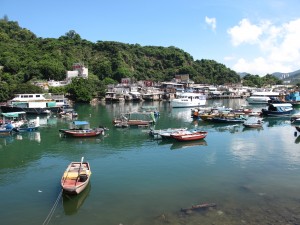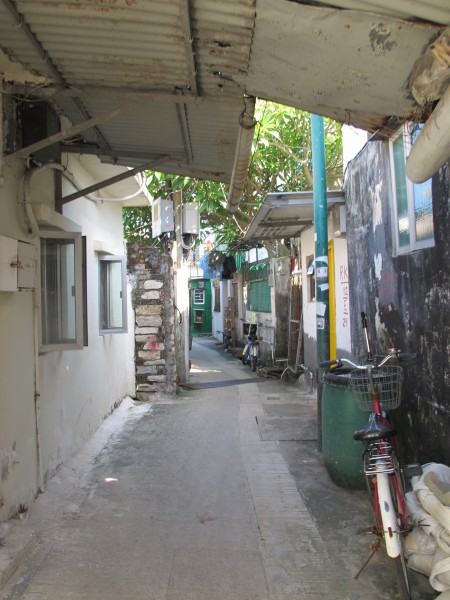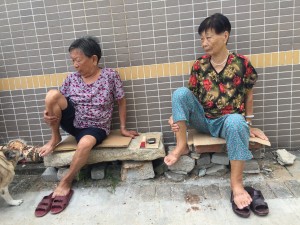
Last edited August 2015
With 7 million people densely compressed in and around the walls of clustered high-rise vertical towers, escaping to Lei Yue Mun (my studio site on the Kowloon side of Hong Kong) felt like I’d set foot in an oasis. What historically served as a home to indigenous Hakka people, turned farmland, turned home to granite minors, turned refugee squatter settlement… presently identifies as a fishing village tourist attraction. Naturally, the spontaneous identity patterns within the community reflect the nonsystematic and scattered arrangement of the village. But it was mainly the landscape that informed the morphology of Lei Yue Mun as it is rich in natural resources. The village alignment follows the natural contours of the topography and extends out into the sea on stilts and platforms. And more obviously, the village’s orientation between the sea and mountains shape its long linear form.

I have to admit though, before that feeling of landing an oasis set in, I felt completely disoriented and out of my element. It wasn’t until I got past the market and posted up on a large rock that overlooked the sea, when I was overcome with a feeling of bliss. Despite the large paifang indicating a transition between two districts, it was unclear where the entrance to the village actually was. Navigating my way around the harbor and past the sleepy fish markets, it seemed as if I’d left the public space and entered someone’s private territory. The narrow paths that were only one shanty separated from the sea were no more than 8 feet wide and draped with line-drying clothes. There were no cars, only people commuting on bicycles with dinging bells or walking on foot which was commonly seen burrowed inside a rubber boot. The corrugated metal roofs were rampant and stacked like the skewered meat from the night market. Had I been transported in the MTR tube from the cosmopolitan metropolis of Hong Kong to a distant underdeveloped country?
 I was lucky to be accompanied by two amazing HKU Cantoneese and Manderin speaking students. With their help we were able to verbally communicate with the residents, visitors, and workers onsite. After several interviews with visitors and workers, we were finally able to interview a group of long-time residents of Lei Yue Mun. The residents cluster against the back side of this bathroom wall everyday around 2pm shadowing the sun patterns. They explained that they enjoy their home, but feel a bit isolated and would like to improve the connectivity for convenience to amenities.
I was lucky to be accompanied by two amazing HKU Cantoneese and Manderin speaking students. With their help we were able to verbally communicate with the residents, visitors, and workers onsite. After several interviews with visitors and workers, we were finally able to interview a group of long-time residents of Lei Yue Mun. The residents cluster against the back side of this bathroom wall everyday around 2pm shadowing the sun patterns. They explained that they enjoy their home, but feel a bit isolated and would like to improve the connectivity for convenience to amenities.